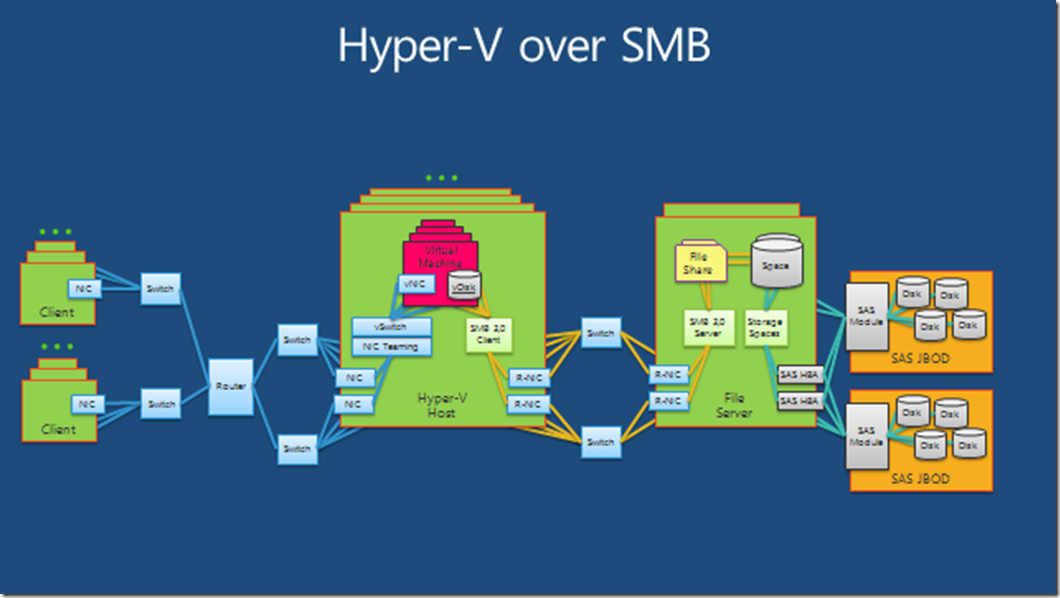Deployment and Migration: Windows Server 2012 SMB 3.0 Deployment Considerations (Part 9 of 19) by Bob Hunt
From September – November of 2012, I delivered IT Camp content that covered SMB 3.0 components (including Hyper-V over SMB) in Windows Server 2012. Because we had so much more content to cover, I did more of an overview of the topic. I’m sure we could spend days on this topic and still have more to cover, but my team mate, Bob Hunt did a post today as part of the Deployment and Migration blog series on SMB 3.0 deployment considerations. I am including a small snippet form his post to “tease” you, but you will want to read the entire article by going directly to Bob’s post.
One of the most compelling features of Windows Server 2012 that customers are looking to implement includes the new SMB 3.0 feature set. Server Message Block (SMB) version 3.0 is the remote file protocol made available in Windows Server 2012 and Windows 8 that offers significant enhancements and a drastically expanded feature set to allow improved availability (i.e. Transparent Failover, Multichannel), Performance (i.e. Scale Out, Direct, BranchCache V2), Security (i.e. Encryption) and Management (i.e. PowerShell) to the Windows Server infrastructure. Maybe most notably, SMB 3.0 also enables several new enterprise deployment scenarios such as Hyper-V over SMB, SQL Server over SMB and Continuously Available File Shares.
Check out the wildly-popular SMB 3.0 Series with Jose Barreto on TechNet Radio at https://aka.ms/SMB3Series
The version 3 enhancements to the SMB remote file protocol essentially changes the way an IT Professional can look at the servers in his datacenter and inevitably enables the simplification of how data is stored for both file shares and applications. Using the SMB 3.0 protocol, customers are encouraged to consider making file servers the sole location for storing all file share, application (i.e. SQL Server), and Hyper-V files. For example, leveraging the SMB 3.0 protocol to store the virtual machines on your Hyper-V hosts allows you to store the .vhd and .vhdx files on a remote file server rather than having the Hyper-V host having to manage the storage for its many virtual machines. This allows all your Hyper-V hosts to be just servers with lots of processors and RAM and allows the IT Pro to worry about connecting storage to file servers. The Hpyer-V hosts would still do all the work for the virtual machines, but the virtual machines themselves would be stored across an SMB 3.0 file share on a file server.
An example of what this could look like is in the diagram below.
Notice the relatively complex above diagram …
Please read the entire article from Bob Hunt’s blog: https://blogs.technet.com/b/bobh/archive/2013/02/14/windows-server-2012-smb-3-0-deployment-considerations.aspx.
Harold Wong
